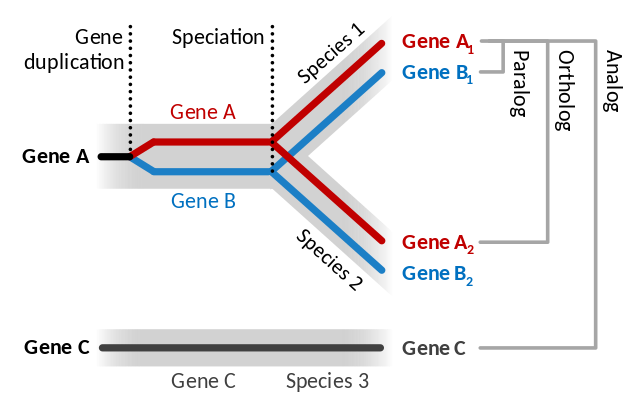In-class problems#
In-class Problems Week 4
Remember that for the in-class problems, you can use different resources (command line manual/help pages, browser-based searches, AI-based problem solving) to find an answer. There is no right or wrong approach to finding an answer to a problem.
Homologs if they have a shared evolutionary history, either:
Paralogs if they are in the same organism and were the result of a duplication event
Orthologs if they are in different organisms as a result of speciation
Analogs if they are in different organisms but have a separate evolutionary origin.

With this in mind, consider the following questions:
Given the gene sequences of a single organism, how would we find potential paralogs?
Given the gene sequences of two organisms, how would we find potential orthologs?
What additional evidence could we use from our work to support the argument that the gene-pairs are paralogs or orthologs?
You can use the genomes from Unix 1 to explore these questions, found at /nfs/teaching/551-0132-00L/1_Unix/genomes.
Note: There will be no example solutions for in-class problems. It is expected that students take notes and engage in the discussions during the lecture. If questions come up, students can use the Slack channels to receive help.